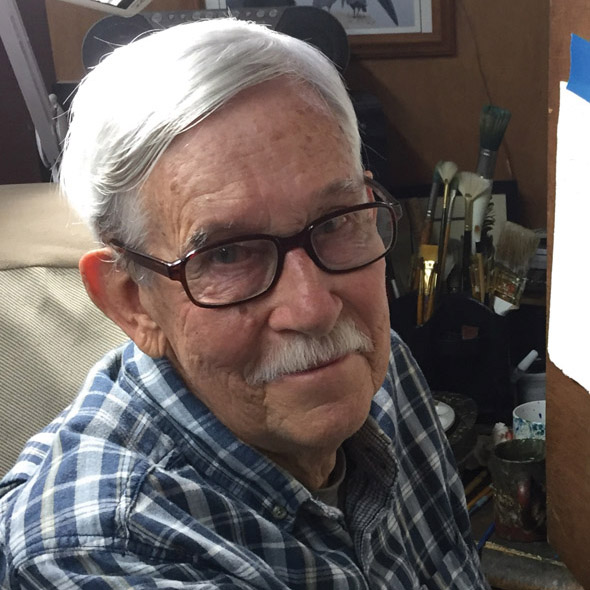
Perpetuating Hula Lineage: Moku O Keawe International Hula Festival
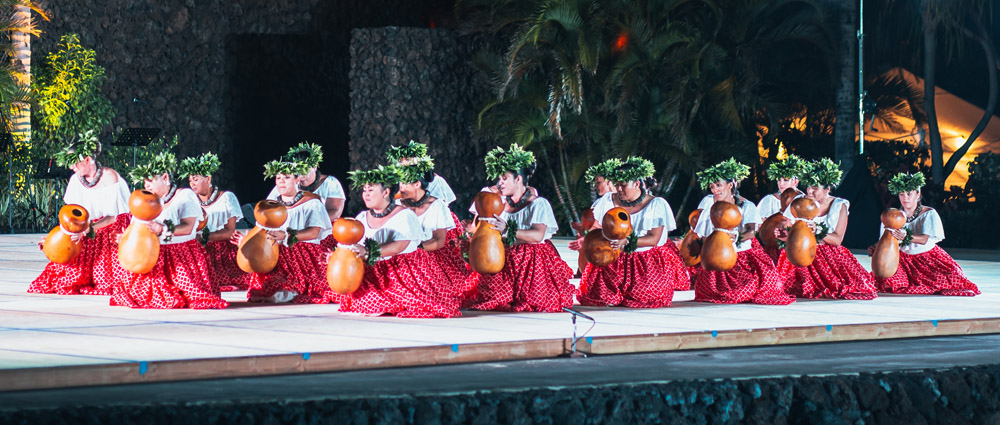
By Marcia Timboy
“Nana i ke kumu,” advises a famous Hawaiian proverb, “Pay attention to the source.” For hula practitioners, this can allude to the obvious, “Watch what your kumu [teacher] does.” The kuleana (responsibility) of hula tradition holds the condition that kumu pass along the wisdom received from their kumu—who in turn received their teachings from past generations, rooted in origins of akua (deities). It also contains a more profound caution, to not to lose sight of hula’s kahua (foundation) in the ancient and ancestral protocols. Hula genealogy is as significant to a hula student as blood genealogy. With the loss of this lineal connection, hula converts to just one more style of dancing.
The worldwide popularity of hula has expanded exponentially since the inception of the Merrie Monarch Festival more than 50 years ago. Considered the “Olympics of Hula,” the MMF has inspired the proliferation of hula schools in Japan, Mexico, Germany, France, the continental US, and elsewhere. When a practice developed in an isolated setting, such as Hawai‘i, with vigorous and stringent protocols over hundreds of years becomes a “global trend” within a few decades, concerns are raised as to its intended enactment. How po‘e hula (hula people) cope with this challenge will determine hula’s development and perpetuation in generations to come.

Kuleana Upheld
Respected Kumu Hula, Nālani Kanaka‘ole, Nani Lim Yap, and renowned designer and hula practitioner Sig Zane observed the rapid growth of hula’s worldwide popularity, and its resulting consequences, over their lifetimes. They asked themselves, “How can the tradition and essence of hula be perpetuated and maintained if it is practiced thousands of miles from the source? What is lost in the translation of hula, formed in and of Hawai‘i, when performed by dancers far away who have never experienced its locale, sites, or environment? When one is asked, ‘Who’s your kumu?’ the query really is: what is your hula lineage; in what style are you trained; who is your ancestral teacher?”
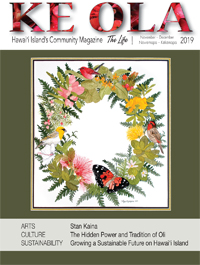
Both Nālani and Nani carry generational hula lineages of Moku O Keawe (Hawai‘i Island), and were raised in its traditions.
Quoting from Honolulu Magazine’s November 22, 2017 issue, in a story entitled “Resource Keepers of the Kaona,” by Lorin Eleni Gill, “Kumu Nālani Kanaka‘ole is the daughter of renowned chanter, composer and kumu hula Edith Kanaka‘ole, who is also the namesake of the stadium that hosts the annual weeklong Merrie Monarch Festival. It was Kanaka‘ole’s grandmother, however, who first taught her. Mary Kekuewa Kanaele Fujii was one of the few kumu who trained in the hula kapu tradition in the late 1800s, and she ensured that her descendants learned the ancient hula style of ‘aiha‘a.
“‘My mom composed a few mele to remember the old moves and stepping patterns she had learned. This was pivotal in changing how we taught hula. It is the practice of hula that activates my ancestral memory. When there is constant change culturally, it is crucial for us to address its authenticity.”’
Kumu Hula Nani Lim Yap, from Kohala in north Hawai‘i Island, keeps the traditions and stories of her ancestors alive through mele, chant, and hula.
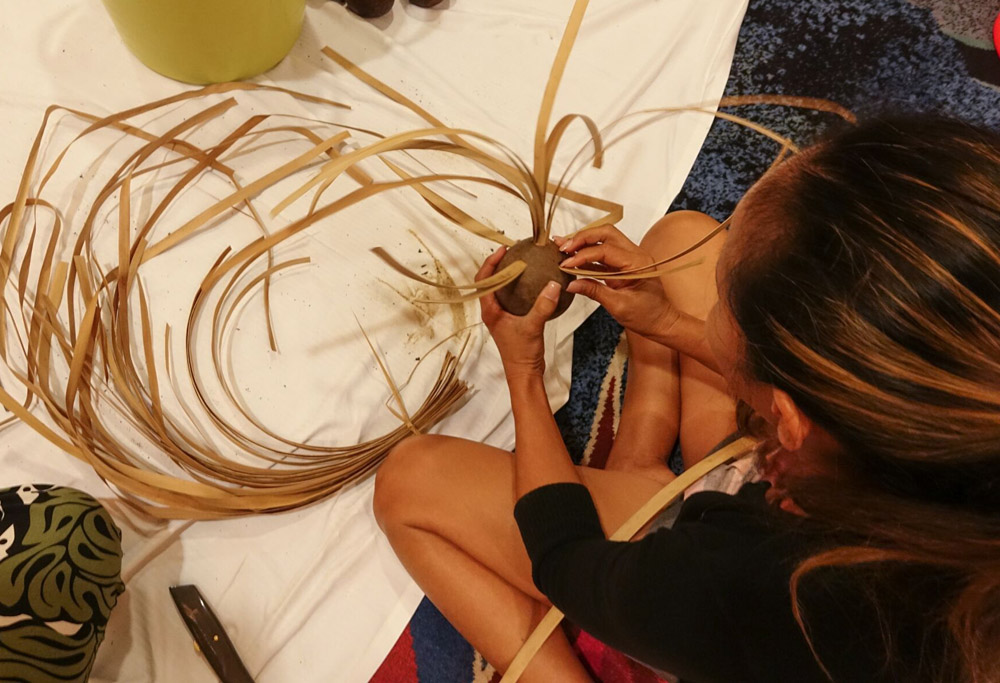
In a Hawai‘i Tribune-Herald article on March 27, 2016, Nani shared, “‘We’re led by the kūpuna to tell these stories because they have to be known. There’s a special connection to the mele, to the place. It was very exciting because there is so much research in the halau, and we always try to find narratives that you don’t see on the Merrie Monarch stage. These are much older mele that come from our hula traditions.”
Nani’s generational connection to place is sustained by telling the Kohala mo‘olelo (stories) and singing Kohala mele (songs). It wasn’t choreography and the movements of hula that came first—it was the story behind the music. Lineage is important; it is what gets passed on, and for Nani, keeping the purity of the style of her kumu and ke kumu [teacher’s teacher] before is crucial to the perpetuation and quality of hula. “Any of the mele that I’ve taught them [students] in their lifetime that they’ve been in hālau with me will remain the same. Lineage comes from kūpuna. I cannot claim I own that. I cannot claim that it’s actually from me. It comes from a place, and it moves through me. It has to. A lot of the mele that we’ve learned from them, those mele still remain. Mele like that, from research and all those movements, all those things that we’ve shared with you, and what we’ve choreographed now; same style. The style remains the same. That’s how you continue.”
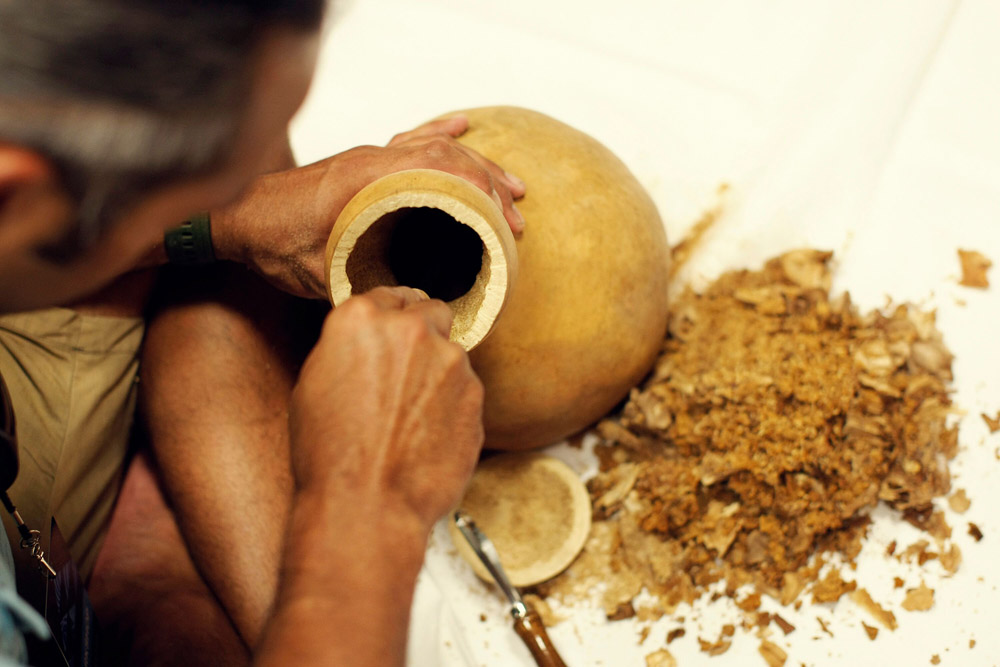
Feeling the kuleana of hula tradition, Sig, Nālani, and Nani acknowledged the importance of maintaining lineage style (generational teachings) of ke kumu, to maintain and pass down the exact style of ke kumu, to know and experience the ano (awe, reverence) of a particular place and time which inspired haku mele (composition of song or chant), to understand why and how specific movements, implements, and adornments were utilized.
Something was required to transmit all of this mana‘o (wisdom) and ‘ike (perception) to uphold the quality and essence of hula. As hula was being practiced in the far corners of the world away from Hawai‘i nei, a venue at the root of its creation would provide a much-needed epicenter of learning. To acquire, maintain, and uphold deep knowledge, one needs to return to the source.
Creating an Educational Hula Festival
“We felt that teaching of [hula] styles were being watered down,” Sig Zane simply stated, as the impetus to create an event, program or project that would recall tradition to maintain the quality of hula.

The Moku O Keawe International Hula Festival (MOKIF) was founded in 2006 on the premise of being an educational foundation. MOKIF’s mission statement says, “Through enriching, and educating the practice and development of hula and its associated arts, the Moku O Keawe Foundation will build, strengthen, and inspire the living cultural traditions of Hawai‘i; through sharing the intrinsic values of the host culture; express appreciation of the visual and hands-on experience of the symbolic and historical nature of Hula and the greater environment. Attendance to cultural workshops, hula competition, exhibits of Hawaiian art and craft, concerts, and other events; travelers from near or far can take the experience home, to share with their community.”
The event is grounded in the hula tradition of passing down the exact style of ke kumu (the teachers) that the attending participants engage in and practice, thus maintaining the purity of each style and lineage.
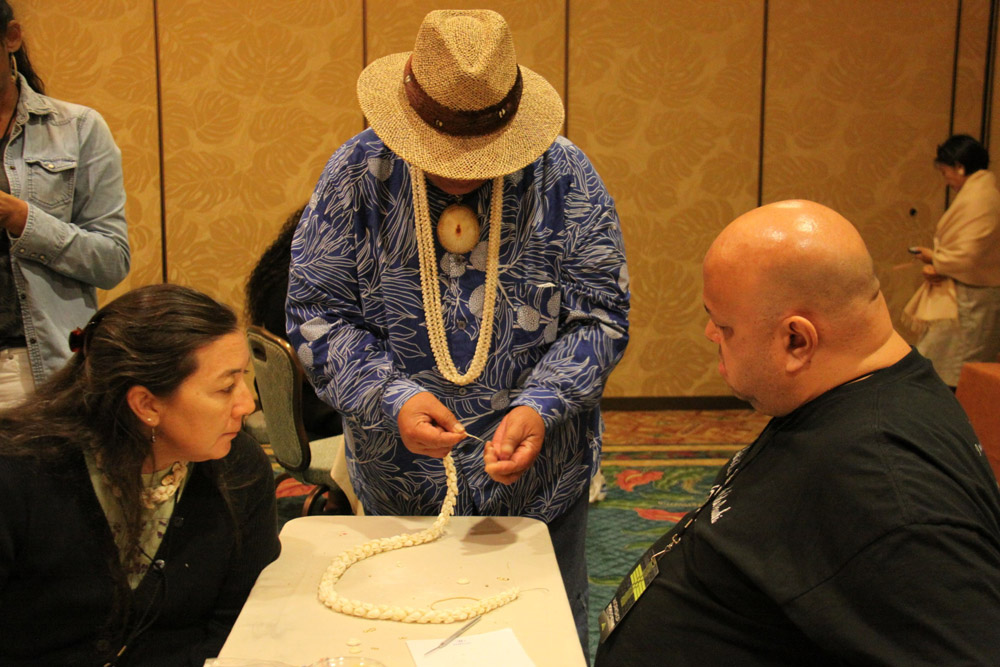
Educational offerings include workshops and classes conducted by highly skilled craftsmen and cultural practitioners. Attendees gain an understanding of why and how specific costumes, implements, and adornments were utilized. Workshops in costume design contain in-depth segments on fabric dying with natural components, carving ‘ohe kapala (bamboo stamps) to create symbolic patterns, weaving pa‘u la‘i (ti leaf skirts) or how to assemble ceremonial attire to appropriately perform specific hula. Lei-making classes focus not only on technique, but why certain plants are the embodiments of hula. Sessions are also presented on building implements such as ipu heke (double gourd), ‘uli‘uli (feathered gourd rattles), pū‘ili (split bamboo sticks), pahu (drums) and more. Outings taken for cultural teachings are held onsite at such locales as Mahai‘ula Beach to experience the ano of a particular place and time which inspired haku mele (composition of song or chant), or to gather ‘ili‘ili (small rock implements) at Keawaiki Bay. Festival participants, including hula practitioners, hula aficionados, and the general public are welcome to attend workshops and classes.
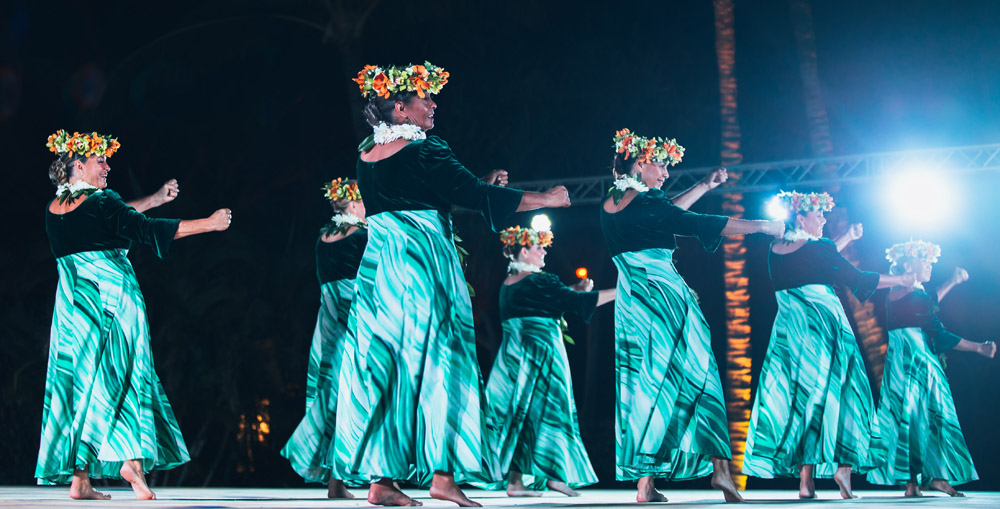
Hula competitions on wahine kahiko (women’s ancient), kūpuna group and soloist (older/mature ladies), wahine ‘auana (women’s modern), and keiki (children) hula are held on consecutive nights to refine lineage style. Winners of the Japan counterpart of MOKIF are invited to compete and are encouraged to engage in direct response by seasoned Merrie Monarch judges. Training of judges is another opportunity provided by a panel of the veteran judges at the festival. Judge candidates must have at least a third generation lineage to acquire this skill that is highly valued in the hula community. The panel sessions are formatted for the hālau (group) hula competitors and judge candidates to learn criteria on what veteran judges look for in hula competition. The audience also is educated, as information is shared on when, how, and by whom mele (song) was composed and hula was choreographed.
The beautiful Waikoloa Bowl at the Queens’ MarketPlace was built to meet the specifications of the Moku O Keawe International Hula Festival. This year’s festival is November 7–10 at the Waikoloa Beach Marriott, where it has been held for the last few years. The MOKIF is likened to a conference, wherein education on hula and its components, history, lineal traditions, craft making, and site visits for cultural teachings are learned and refined for its perpetuation. ❖
For more information: mokif.com
Photos courtesy of the Moku O Keawe International Hula Festival

